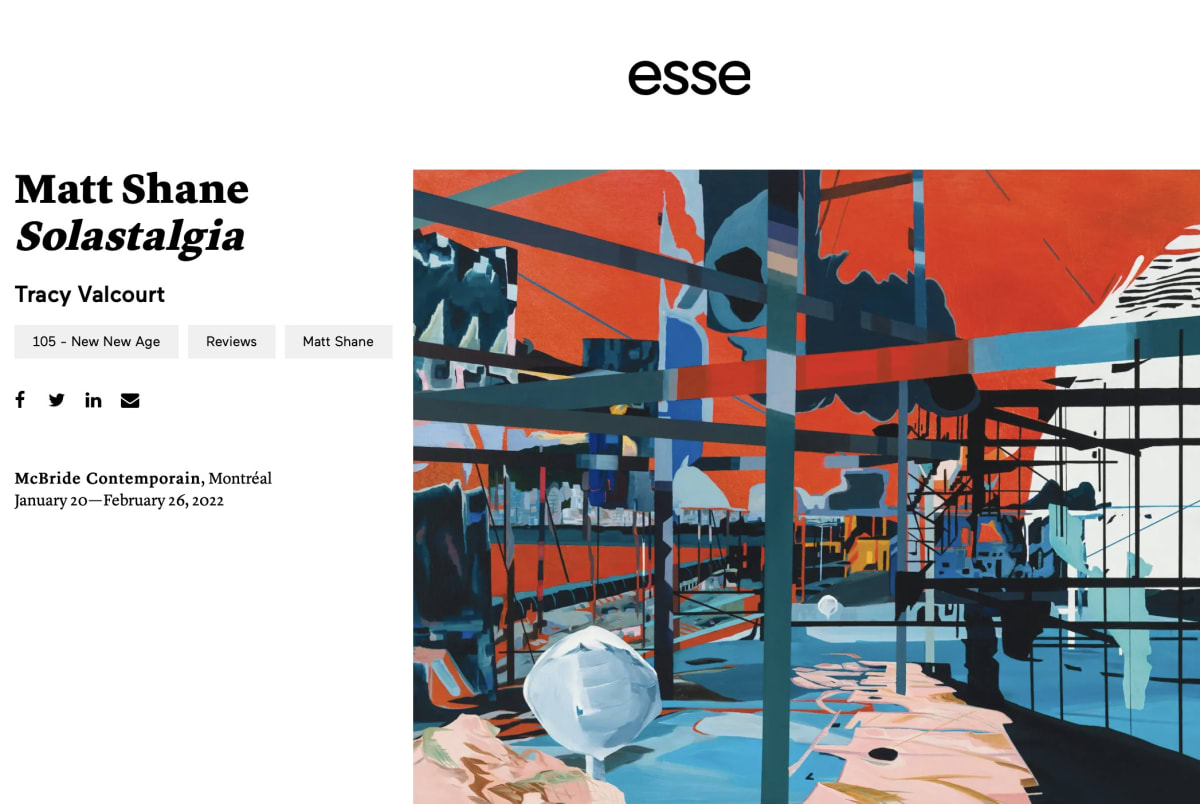Matt Shane : Solastalgia
In 2003, two years prior to the launch of Google Earth, the environmental philosopher Glenn Albrecht coined the term “solastalgia” to describe environmentally induced distress. Albrecht writes, “As opposed to nostalgia--the melancholia or homesickness experienced by individuals when separated from a loved home--solastalgia is the distress that is produced by environmental change impacting on people while they are directly connected to their home environment.”[1]That this neologism emerged just before the release of Google Earth reveals an anticipation of a fundamental psychological register that would come to be produced through aerial views of landscape. As such, solastalgia could perhaps be considered an emotional data set of lamentation, layered into satellite imagery, which often illustrates, in before-and-after fashion, the collapse of ecosystems and the destruction of home.
The first image that viewers encounter in the interactive geo-mapped world of Google Earth, is a composite, as satellite images tend to be. Formed of trillions of pixels of over a billion stitched-together satellite and aerial images, this image, explains Google, proposes a generalized global springtime – they refer to it as “Pretty Earth.” Matt Shane’s Solastagia is a series that seems to respond to this artifice of eternal spring and ideal landscape held monumental in some digital vacuum. Trespassing into extraterritorial regions, past where Google Earth is calibrated to hold form, Shane challenges structural integrity so that the architectures and infrastructures that occupy the scenes begin to melt or dissolve. What becomes pictured then is not forms but processes, whose forces appear more destructive than generative. In recording the rapid transformation of ecologies, they are examples of what Susan Schuppli calls “hyperimages.” [2]
Solastalgia is also composite imagery – a series of paintings produced through layering strategies that read like digital artifacts. This is not to say they are photographic in the sense of realism, but rather that they convincingly borrow a pixelated syntax that balances between the formulation of data points and the corruption of resolution. Like the colour that is assigned to wavelengths in satellite imagery, Shane uses a hyperbolic colour palette to render his landscapes into a code of vivid reds, pale pinks, occasionally marred by dark patches whose surfaces hold the viscosity of oil spills. In certain pieces there is green, and we cling to it. They are images of images that acknowledge that they exist in the post-photographic era. In other words, their value is extracted not only from the discreet information held within the individual frames, but also from the relationships cultivated between each piece in the collection, extended to the flow of images in an agitated visual culture that continuously reproduces and circulates.
Text by Tracy Valcourt
Matt Shane’s individual practice incorporates painting and drawing in several different modes, all of which are practised with assured handling and confident execution. Marrying imaginative and intellectual elements to a generous, humanistic outlook, Shane investigates places as ideas and vice versa. He creates panoramic vistas that both invite us inwards as well as insist on a mental taking stock, an attempt at systematic logic that can be understood as literal, political, technological - but also as aesthetic and abstract. Shane holds a BFA from the University of Victoria and an MFA from Concordia University, and lives and works in Montreal. He has received numerous grants, commissions, residencies, and bursaries and is currently a professor at Concordia University and Dawson College. His work can be found in the collections of the Bank of Montreal, the Caisse Populaire Desjardins,Hydro Québec, the Musée d’art contemporain des Laurentides, and the Musée d’art contemporain de Montréal.









